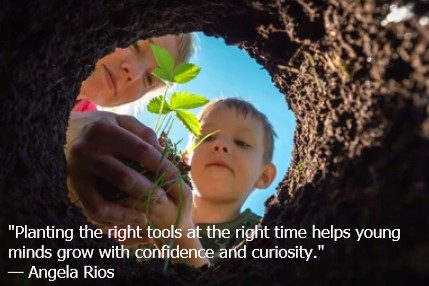
Working with my classmates to explore the thoughtful integration of technology has been both eye-opening and relevant to my role as a kindergarten teacher. Through our discussion, I realized that embracing new educational tools is not about chasing trends but about maintaining a clear focus on meaningful learning experiences for young children.
One of the most valuable takeaways from our group work was understanding how important it is to critically evaluate new tools before bringing them into the classroom. In kindergarten, students are just beginning to develop their academic identities, and their interactions with technology need to be purposeful, developmentally appropriate, and engaging. We discussed the importance of setting clear goals before adopting new platforms and using metrics like student engagement, task completion, and differentiated outcomes to assess their impact.
As a team, we explored questions such as: How can we be sure a tool really adapts to student needs? and What evidence should we expect from developers to support those claims? I learned to look for features that support personalization, such as progress tracking, language options for emergent bilinguals, and real-time feedback. As Miller (2020) noted, effective evaluation of edtech tools must go beyond surface-level features and focus on what actually enhances learning outcomes.
This collaboration reinforced the idea that technology should never replace strong pedagogy it should amplify it. I now feel more confident navigating new digital tools, asking critical questions, and choosing what truly serves my students. In my own classroom, this learning helps me design tech experiences that foster independence, creativity, and equitable access to learning.
References
ABC Life Literacy Canada. (2024, May 13). Empowering learning: Leveraging technology in adult education. https://abclifeliteracy.ca/news/empowering-learning-leveraging-technology-in-adult-education/
Bransford, J. D., Brown, A. L., & Cocking, R. R. (Eds.). (2000). How people learn: Brain, mind, experience, and school (Expanded ed.). National Academy Press.
Campbell, G. (2009). A personal cyberinfrastructure. EDUCAUSE Review, 44(5), 58–59. https://er.educause.edu/articles/2009/9/a-personal-cyberinfrastructure
Jonassen, D. H. (1999). Designing constructivist learning environments. In C. M. Reigeluth (Ed.), Instructional design theories and models: A new paradigm of instructional theory (Vol. II, pp. 215–239). Lawrence Erlbaum Associates.
Luckin, R., Holmes, W., Griffiths, M., & Forcier, L. B. (2016). Intelligence unleashed: An argument for AI in education. Pearson Education. https://www.pearson.com/content/dam/one-dot-com/one-dot-com/global/Files/about-pearson/innovation/open-ideas/Intelligence-Unleashed-Publication.pdf
Miller, S. (2020, November 12). What matters most when you’re evaluating edtech tools. Edutopia. https://www.edutopia.org/article/what-matters-most-when-youre-evaluating-edtech-tools/
Mishra, P., & Koehler, M. J. (2006). Technological pedagogical content knowledge: A framework for teacher knowledge. Teachers College Record, 108(6), 1017–1054. https://doi.org/10.1111/j.1467-9620.2006.00684.x
Nel, R. (2024, May 3). 10 factors for evaluating new technology. ITONICS. https://www.itonics-innovation.com/blog/evaluating-technologies
Nel, S. (2024). Evaluating educational technology: A practical guide for teachers and leaders. EduTech Press.
Pink, D. H. (2009). Drive: The surprising truth about what motivates us. Riverhead Books.
Padlet. (2024). Collaborative discussion 2 – Leading by Learning Advancement. https://padlet.com/twhittingto1/collaborative-discussion-2-leading-by-learning-advancement-16itgkakfe7ok2t3